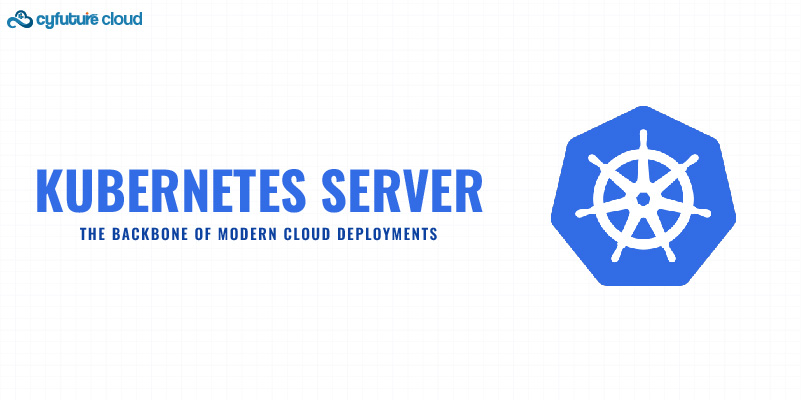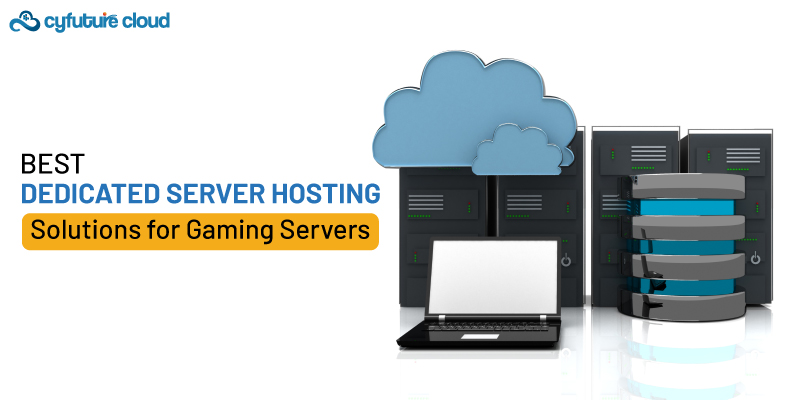Table of Contents
Cloud storage refers to storing data on remote servers accessed via the internet rather than on a local device or physical server. This allows for easy access, scalability, and the ability to share and collaborate on files with others. According to a 2020 survey by the Cloud Industry Forum, 82% of businesses in the UK use some form of cloud storage.
Object storage and block storage are two types of cloud storage. Object storage is a method of storing data as individual objects, each with a unique identifier and metadata, rather than as a file or block of data. This allows for easy scalability and management of large amounts of data. On the other hand, block storage stores data as blocks of a fixed size, similar to how data is stored on a traditional hard drive. This allows for faster access to specific pieces of data but may not be as easily scalable as object storage. Both types of storage have their own use cases and are used in different situations depending on the user’s needs.
An Overview of Object Storage
Object storage is a type of data storage architecture that stores data as individual objects rather than as a file or block of data. Each object is typically stored with a unique identifier and metadata that describes the object’s properties and characteristics. This allows for easy scalability and management of large amounts of data.
Object storage is often used for storing unstructured data, such as images, videos, and backups. It is also often used for data archiving, disaster recovery, and cloud-native applications. The objects in object storage can be accessed through an API, making it easy to integrate with other applications and services.
One of the main advantages of object storage is its scalability. Because objects are stored individually, it is easy to add more storage capacity as needed, without restructuring the data. Additionally, object storage systems often have built-in redundancy and data durability features, making them well-suited for storing data that needs to be kept for long periods of time.
Popular object storage providers include Cyfuture Cloud, Amazon S3, Microsoft Azure Blob storage, and Google Cloud Storage.
Characteristics
Characteristics of object storage include:
- Data is stored as individual objects, with a unique identifier and associated metadata.
- Objects can be any type of data, including text, images, videos, or binary files.
- Object storage is highly scalable, making it well-suited for storing large amounts of data.
- Objects are accessed through an API rather than a file system, making it easy to integrate with other applications and services.
- Object storage systems often have built-in redundancy and data durability features, making them well-suited for storing data that needs to be kept for long periods.
- The system is designed to be self-healing and self-managing, automatically spreading data across multiple servers to ensure high availability and durability.
- Object storage is often used for storing unstructured data, such as images, videos, and backups, and for data archiving, disaster recovery, and cloud-native applications.
- It enables users to store and retrieve files of any size and is designed to handle millions of concurrent objects and users.
- It is cost-efficient, as it is typically charged based on the amount of data stored, making it a popular choice for businesses of all sizes.
Use Cases & Advantages
Object storage is a versatile type of data storage that can be used in a variety of different use cases, including:
– Cloud storage: Object storage is often used as a foundation for cloud storage services, allowing users to store and access data from any location and device.
– Backup and disaster recovery: Object storage is well suited for storing large amounts of data for long periods of time, making it a popular choice for backup and disaster recovery.
– Media and entertainment: Object storage can be used to store and distribute large amounts of video and audio files, making it ideal for media and entertainment companies.
– Big data and analytics: Object storage can store and process large amounts of unstructured data, making it ideal for big data and analytics use cases.
– Internet of Things (IoT): Object storage can be used to store and process large amounts of data generated by IoT devices, making it ideal for IoT applications.
Advantages of object storage include:
– Scalability: Because objects are stored individually, it is easy to add more storage capacity as needed, without the need to restructure the data.
– Durability: Object storage systems often have built-in redundancy and data durability features, making them well suited for storing data that needs to be kept for long periods of time.
– Easy integration: Objects are accessed through an API rather than a file system, making it easy to integrate with other applications and services.
– Cost-efficiency: Object storage is typically charged based on the amount of data stored, making it a cost-efficient option for businesses of all sizes.
– Self-healing and self-managing: Object storage systems are designed to be self-healing and self-managing, automatically spreading data across multiple servers to ensure high availability and durability.
Examples of Object Storage Providers
There are several popular object storage providers, including:
– Amazon S3 (Simple Storage Service): Amazon S3 is one of the most popular object storage services, and is widely used for cloud storage, backup and disaster recovery, big data and analytics, and more. It is a part of the Amazon Web Services (AWS) platform and is known for its scalability, durability, and ease of use.
– Google Cloud Storage: Google Cloud Storage is another popular object storage service, and is also widely used for cloud storage, backup and disaster recovery, big data and analytics, and more. It is a part of the Google Cloud Platform and is known for its scalability, durability, and ease of use.
– Microsoft Azure Blob Storage: Microsoft Azure Blob Storage is a fully managed object storage service that enables the unstructured data to be stored in the cloud. This can be used for a wide variety of scenarios including serving images/documents as content, streaming video/audio, and storing backups.
– Cyfuture Cloud Object Storage: IBM Cloud Object Storage is a fully-managed, highly-scalable object storage service that enables users to store and retrieve files of any size, and it is designed to handle millions of concurrent objects and users.
– OpenStack Swift: OpenStack Swift is an open-source object storage system that is part of the OpenStack project. It is designed to store and manage large amounts of unstructured data, and is commonly used for cloud storage, backup and disaster recovery, big data and analytics, and more.
– Oracle Cloud Object Storage: Oracle Cloud Object Storage is a scalable, high-performance object storage service that enables users to store and retrieve files of any size, and it is designed to handle millions of concurrent objects and users.
These are just a few examples of popular object storage providers. There are many other providers available, each with their own features and pricing plans, so it’s worth researching different options to find the one that best suits your needs.
An Overview of Block Storage
Block storage is a type of data storage that stores data as fixed-size blocks, similar to how data is stored on a traditional hard drive. Each block is typically addressed by its location on the storage device, and can be read and written to independently of other blocks. This allows for faster access to specific pieces of data, but may not be as easily scalable as object storage.
Block storage is often used for storing structured data, such as databases, and for applications that require low-latency, high-performance storage, such as virtualization, high-performance computing, and online transaction processing.
One of the main advantages of block storage is its ability to provide low-latency, high-performance storage for I/O-intensive workloads. Additionally, block storage systems often have built-in data protection features, such as snapshots and replication, that can be used to protect data in case of hardware failure or disaster.
Popular block storage providers include Amazon Elastic Block Store (EBS), Microsoft Azure Disk Storage, and Google Cloud Persistent Disk.
Characteristics
Characteristics of block storage include:
- Data is stored as fixed-size blocks, typically addressed by their location on the storage device.
- Blocks are typically read and written to independently of other blocks, allowing for faster access to specific pieces of data.
- Block storage is often used for storing structured data, such as databases, and for applications that require low-latency, high-performance storage, such as virtualization, high-performance computing, and online transaction processing.
- Block storage is accessed through a file system, rather than an API, making it well suited for traditional, file-based applications.
- Block storage systems often have built-in data protection features, such as snapshots and replication, that can be used to protect data in case of hardware failure or disaster.
- It is typically provisioned as a virtual disk and can be mounted as a volume by an operating system or hypervisor.
- Block storage can be used to create a storage area network (SAN) or network-attached storage (NAS)
- It is most suited for use cases that require high IOPS (I/O operations per second) and low latency.
- Block storage is typically charged based on the amount of storage capacity used and the number of I/O operations performed.
Block storage is different than object storage which stores data as individual objects, each with a unique identifier and metadata. It is also different than file storage, which stores data as files in a hierarchical file system. Each type of storage has its own use cases and are used in different situations depending on the needs of the user.
Use Cases and Advantages
Block storage is a versatile type of data storage that can be used in a variety of different use cases, including:
– Virtualization: Block storage is often used as the storage backend for virtualization environments, such as VMware or Hyper-V, because it can provide low-latency, high-performance storage for virtual machines.
– Databases: Block storage is well suited for storing structured data, such as databases, because it can provide low-latency, high-performance storage for I/O-intensive workloads.
– High-Performance Computing: Block storage is often used for high-performance computing workloads, such as scientific simulations and financial modeling, because it can provide low-latency, high-performance storage for large amounts of data.
– Online Transaction Processing: Block storage is also used for Online Transaction Processing (OLTP) workloads, where low latency and high IOPS are crucial to support a high number of parallel transactions.
– File Services: Block storage can be used to create a storage area network (SAN) or network-attached storage (NAS), which can be used to provide file-based storage services to users and applications.
Advantages of block storage include:
– Performance: Block storage can provide low-latency, high-performance storage for I/O-intensive workloads.
– Data protection: Block storage systems often have built-in data protection features, such as snapshots and replication, that can be used to protect data in case of hardware failure or disaster.
– Flexibility: Block storage can be used for a wide variety of use cases, including virtualization, databases, high-performance computing, and file services.
– Interoperability: Block storage can be accessed through a file system, making it well suited for traditional, file-based applications.
– Scalability: Block storage can be easily scaled up or down to meet the changing storage needs of an application.
– Cost-efficiency: Block storage is typically charged based on the amount of storage capacity used and the number of I/O operations performed, making it a cost-efficient option for businesses of all sizes.
Comparison of Object Storage and Block Storage
Both object storage and block storage are types of cloud storage that can be used to store and manage data. However, there are some key differences between the two:
Similarities
- Both can be used for cloud storage and data management.
- Both can be accessed via the internet, allowing for easy access and collaboration.
- Both can provide scalability, durability and data protection features, depending on the provider.
Differences
- Object storage stores data as individual objects, each with a unique identifier and metadata, while block storage stores data as fixed-size blocks, similar to a traditional hard drive.
- Object storage is accessed through an API, while block storage is accessed through a file system.
- Object storage is well suited for storing unstructured data, such as images and videos, while block storage is well suited for storing structured data, such as databases.
When to Use Object Storage vs Block Storage?
Object storage should be used when you need to store and manage large amounts of unstructured data, such as images, videos, and backups. Object storage is also well suited for data archiving and disaster recovery.
Block storage should be used when you need low-latency, high-performance storage for structured data, such as databases, and for applications that require high IOPS (I/O operations per second) and low latency. It’s also suitable for use cases such as virtualization, high-performance computing, and online transaction processing.
It’s worth noting that there’s no hard rule that you must use either object storage or block storage exclusively, and some providers offer both types of storage. In some cases it’s possible to use a combination of both object and block storage to meet the specific requirements of your application.
| Aspect | Object Storage | Block Storage |
|---|---|---|
| Data Granularity | Stores data as objects with metadata, suitable for unstructured data like images, videos, and documents. | Manages data in fixed-sized blocks, ideal for structured data such as databases and virtual machine disks. |
| Access Method | Accessed via APIs using unique object identifiers (e.g., RESTful APIs). | Accessed as raw blocks, often treated like physical hard drives and require a file system for data organization. |
| Scalability | Highly scalable and can handle massive amounts of data, as each object is independent. | Scalability depends on the size of the block storage volume and might require more management for large-scale data. |
| Metadata | Objects can have rich metadata associated with them, allowing for easier organization and search. | Limited metadata capabilities compared to object storage. |
| Use Cases | Suitable for storing large volumes of unstructured data, content distribution, and data archives. | Ideal for running applications that require low-level control of storage, like databases and virtual machines. |
| Redundancy and Durability | Offers built-in redundancy and durability through replication and erasure coding. | Redundancy and durability often require external RAID configurations or mirroring. |
| Cost | Typically cost-effective for long-term storage of large datasets. | Costs may vary but can be higher for frequently changing data. |
Conclusion
The cloud storage market is expected to continue growing in the future as more businesses and individuals turn to cloud-based solutions for data storage and management. According to a forecast by ResearchAndMarkets, the global cloud storage market is expected to grow at a CAGR of 16.4% from 2020 to 2025.
As the amount of data generated and stored continues to grow, the need for scalable, durable and secure storage solutions will increase. Object storage and block storage will continue to play a significant role in meeting this need, and as technology and providers continue to evolve, we can expect to see new and improved features and capabilities in both object storage and block storage solutions.
The integration of Artificial intelligence and Machine learning with cloud storage is expected to be one of the future trends that will enable data analysis and predictions based on the stored data. Additionally, the growing popularity of edge computing and the Internet of Things (IoT) will drive the need for storage solutions that can handle large amounts of data generated at the edge of the network.
Recent Post
Send this to a friend

 Server Colocation
Server Colocation CDN Network
CDN Network Linux Cloud Hosting
Linux Cloud Hosting Kubernetes
Kubernetes Pricing Calculator
Pricing Calculator
 Power
Power
 Utilities
Utilities VMware Private Cloud
VMware Private Cloud VMware on AWS
VMware on AWS VMware on Azure
VMware on Azure Service Level Agreement
Service Level Agreement 



















